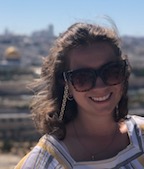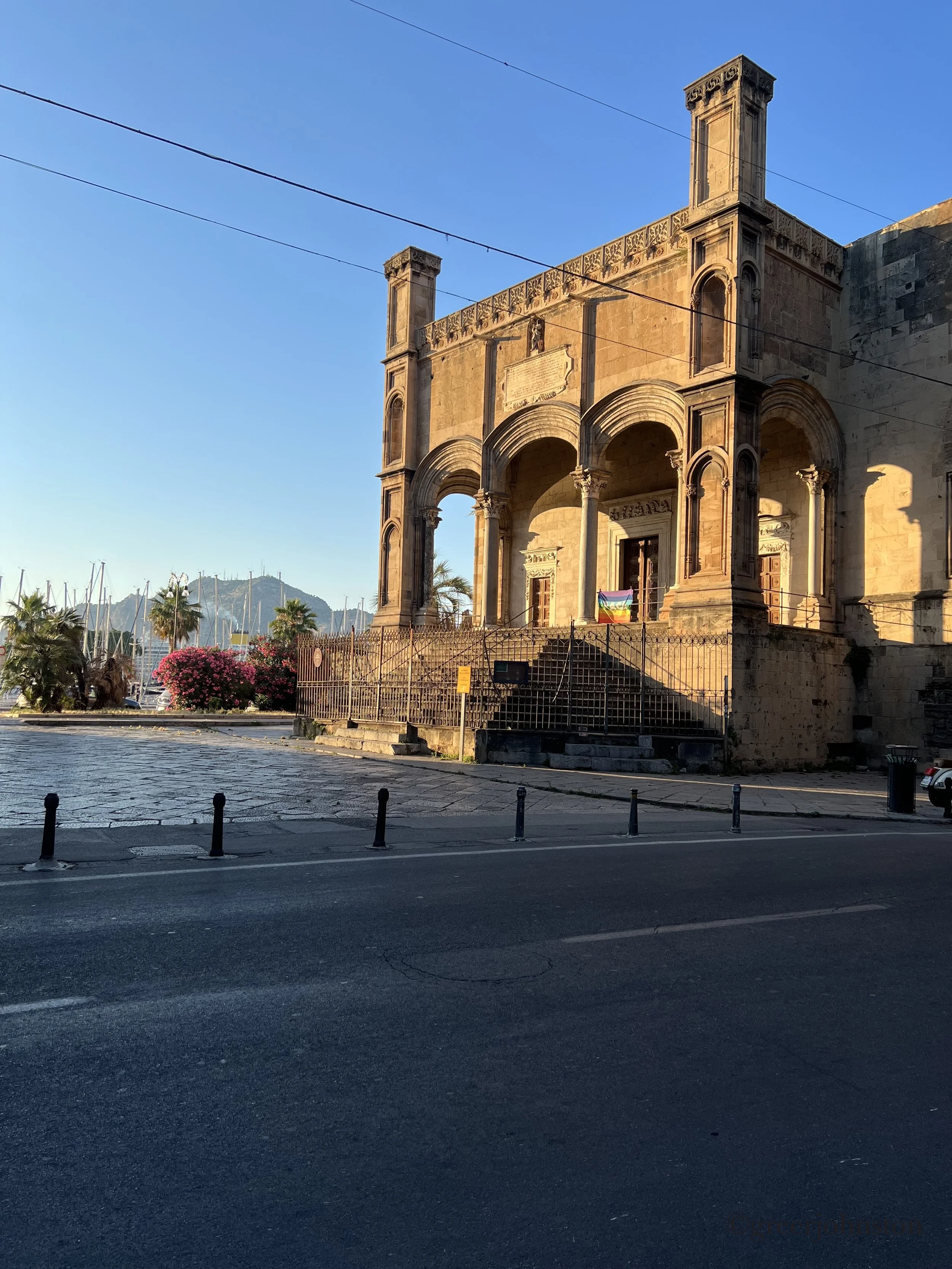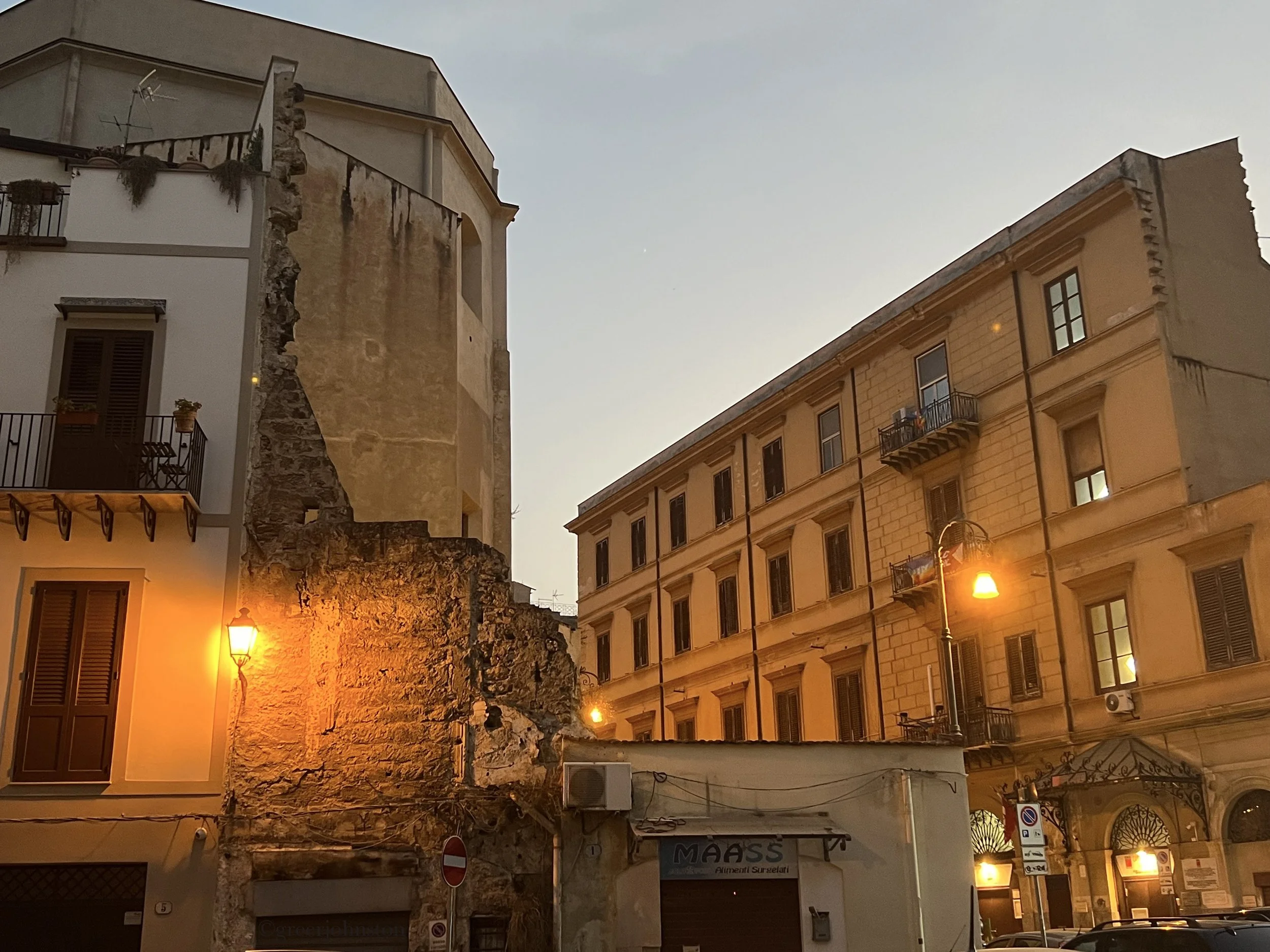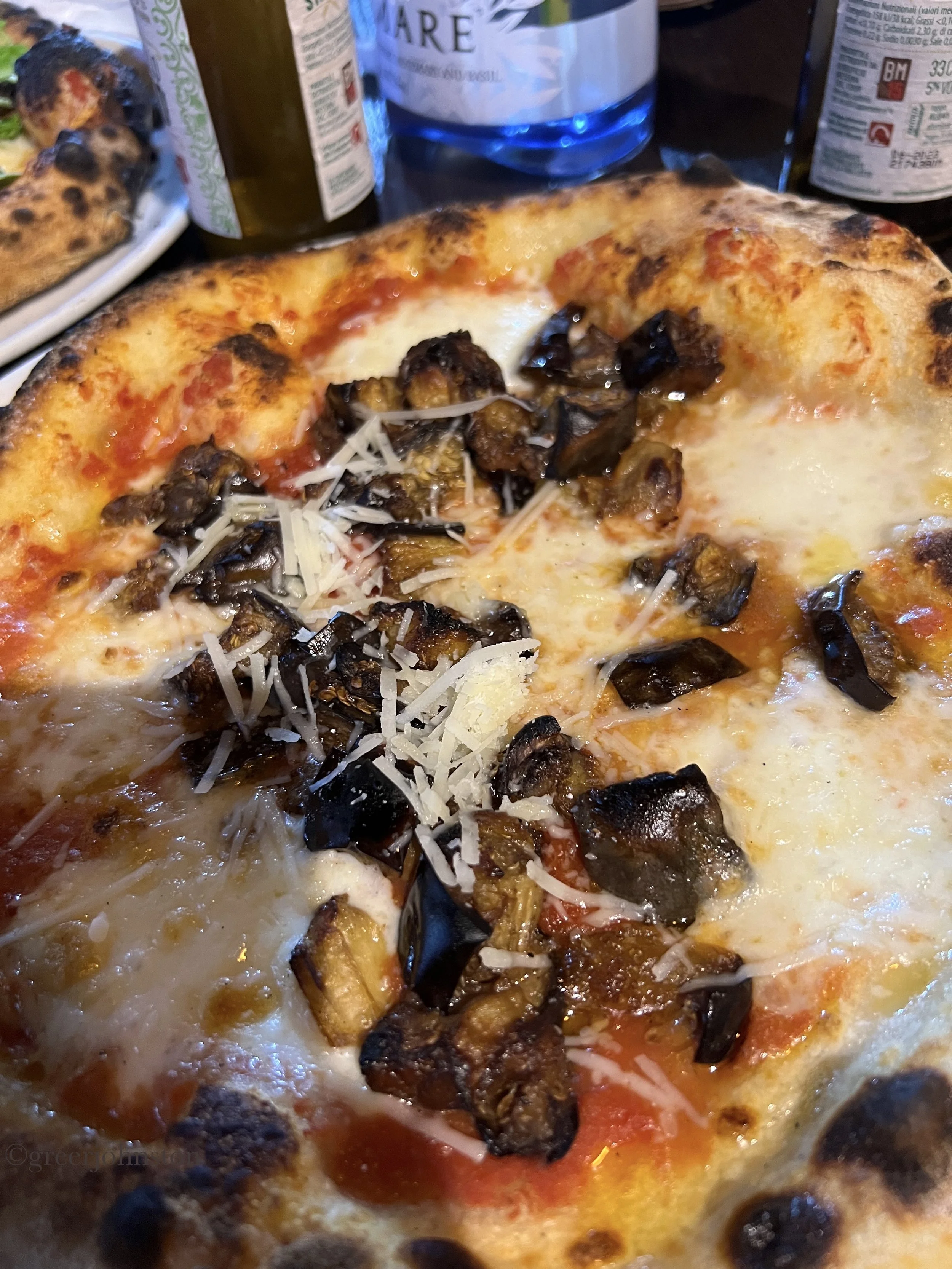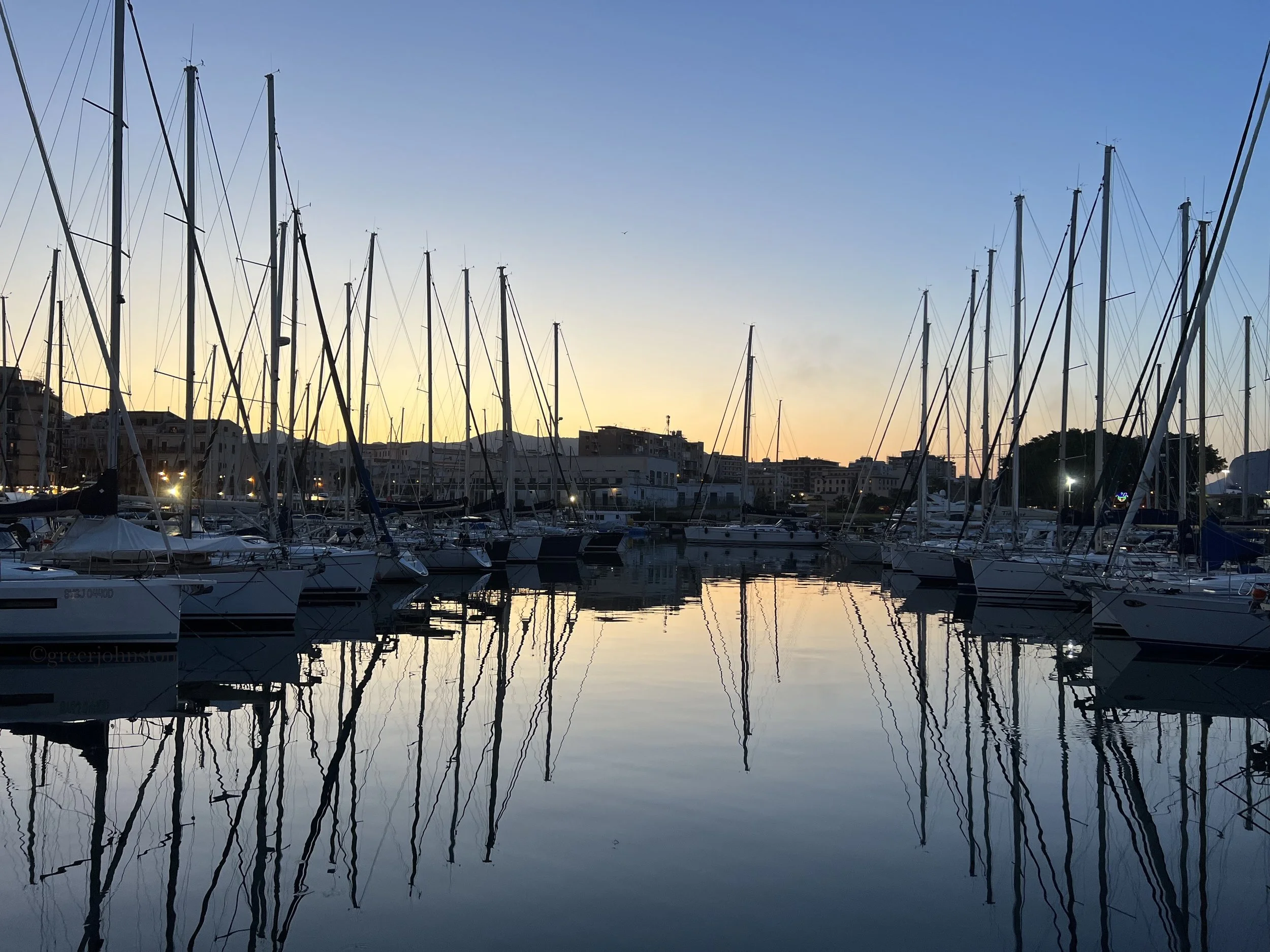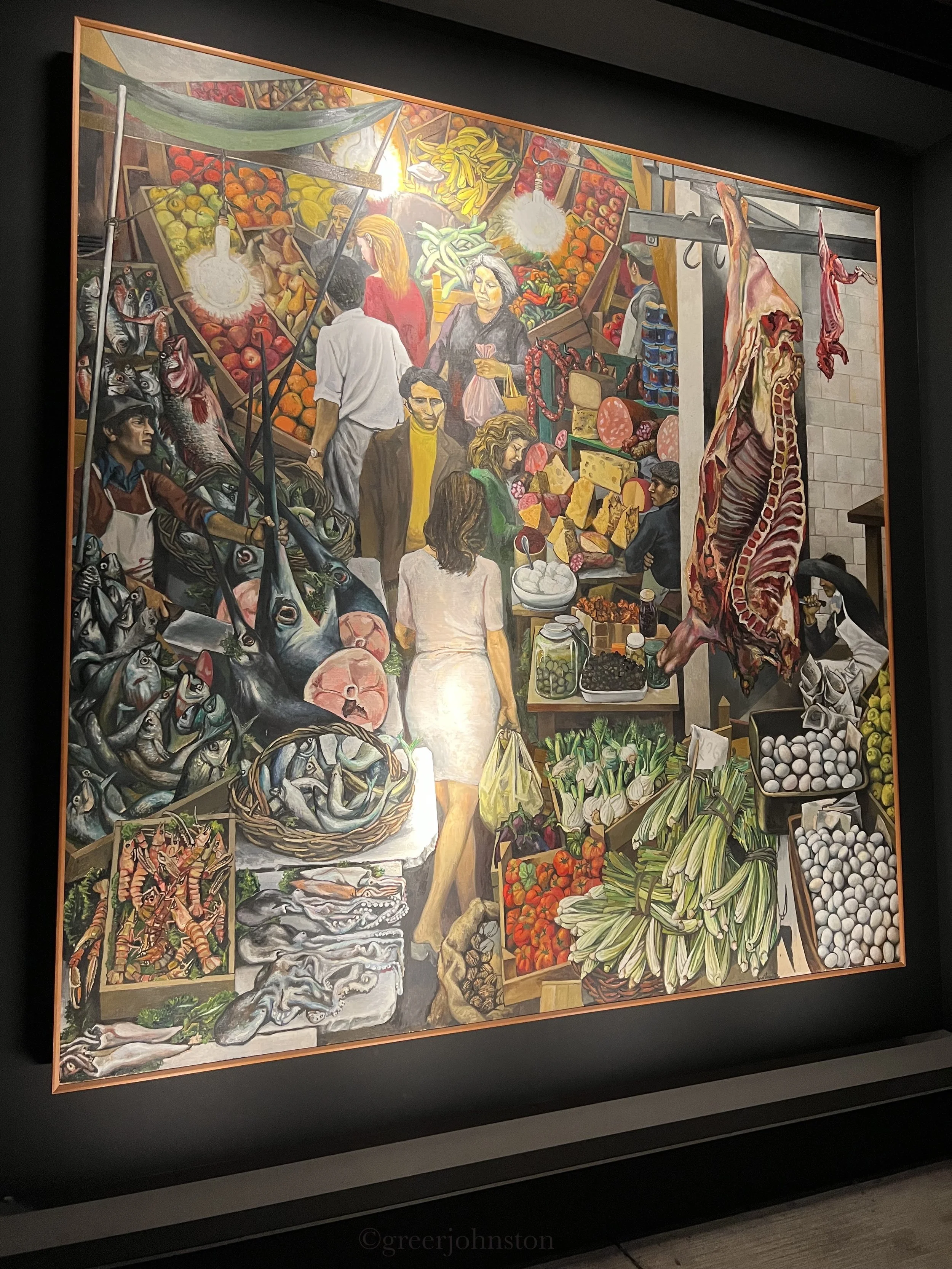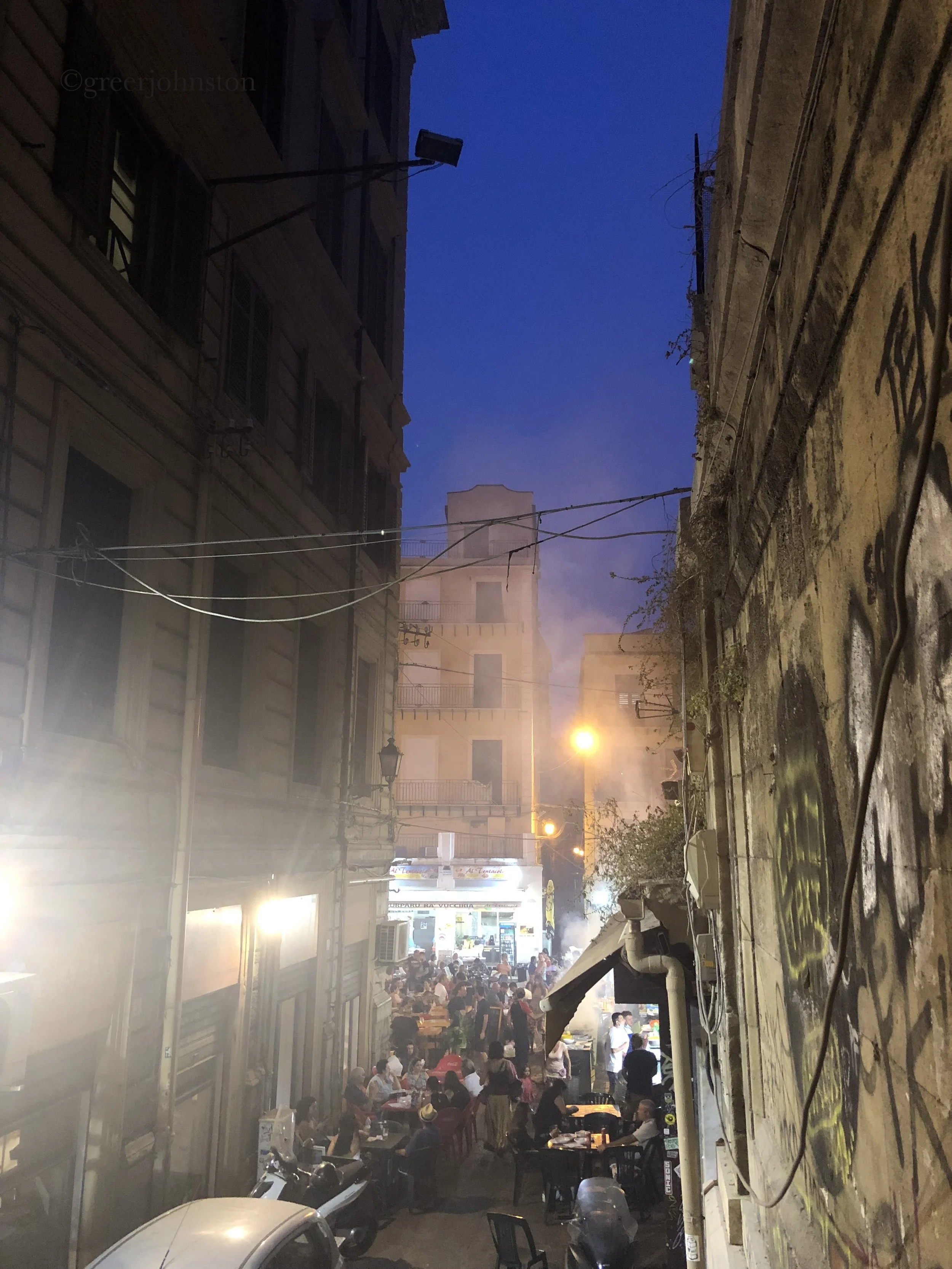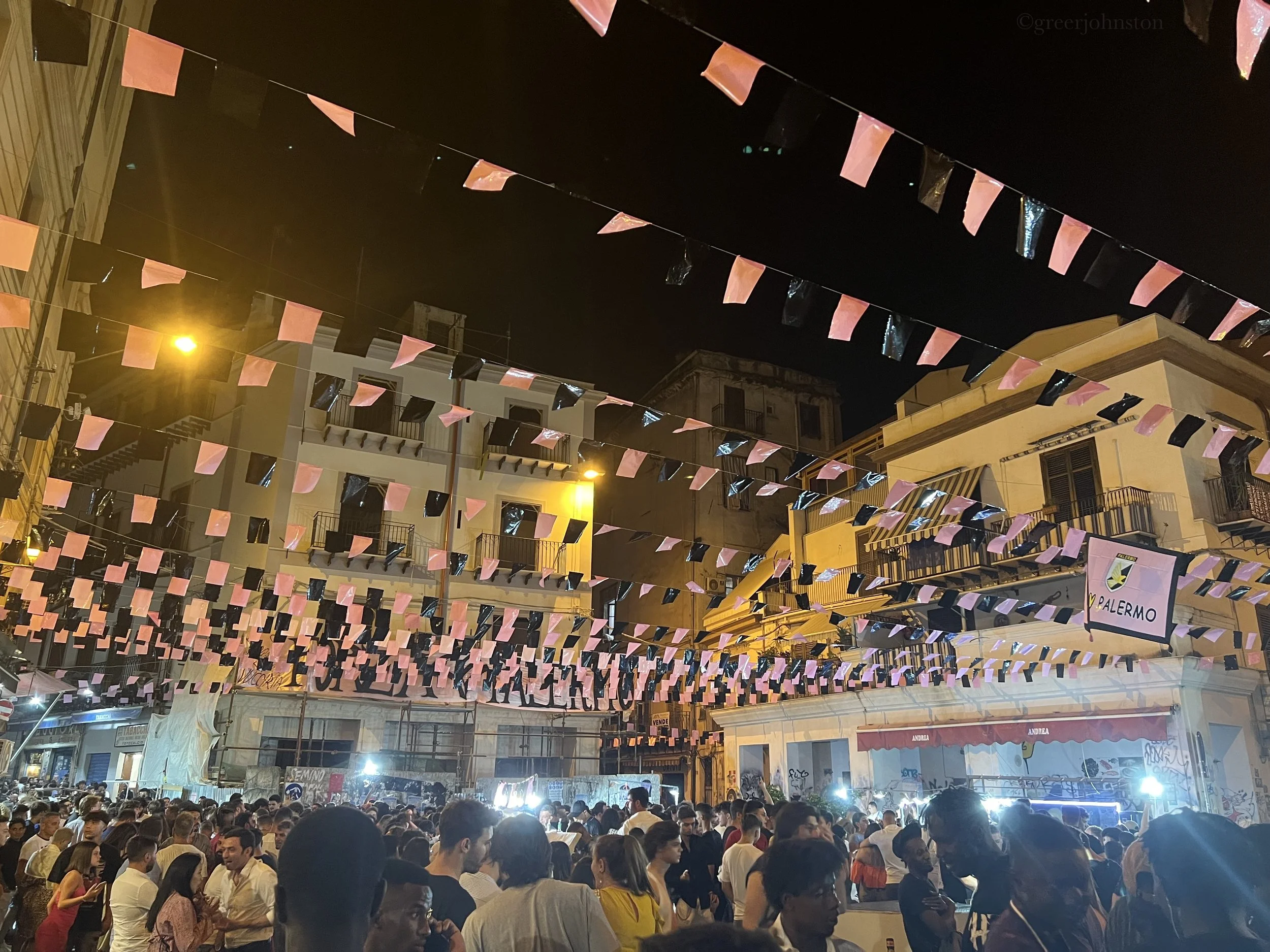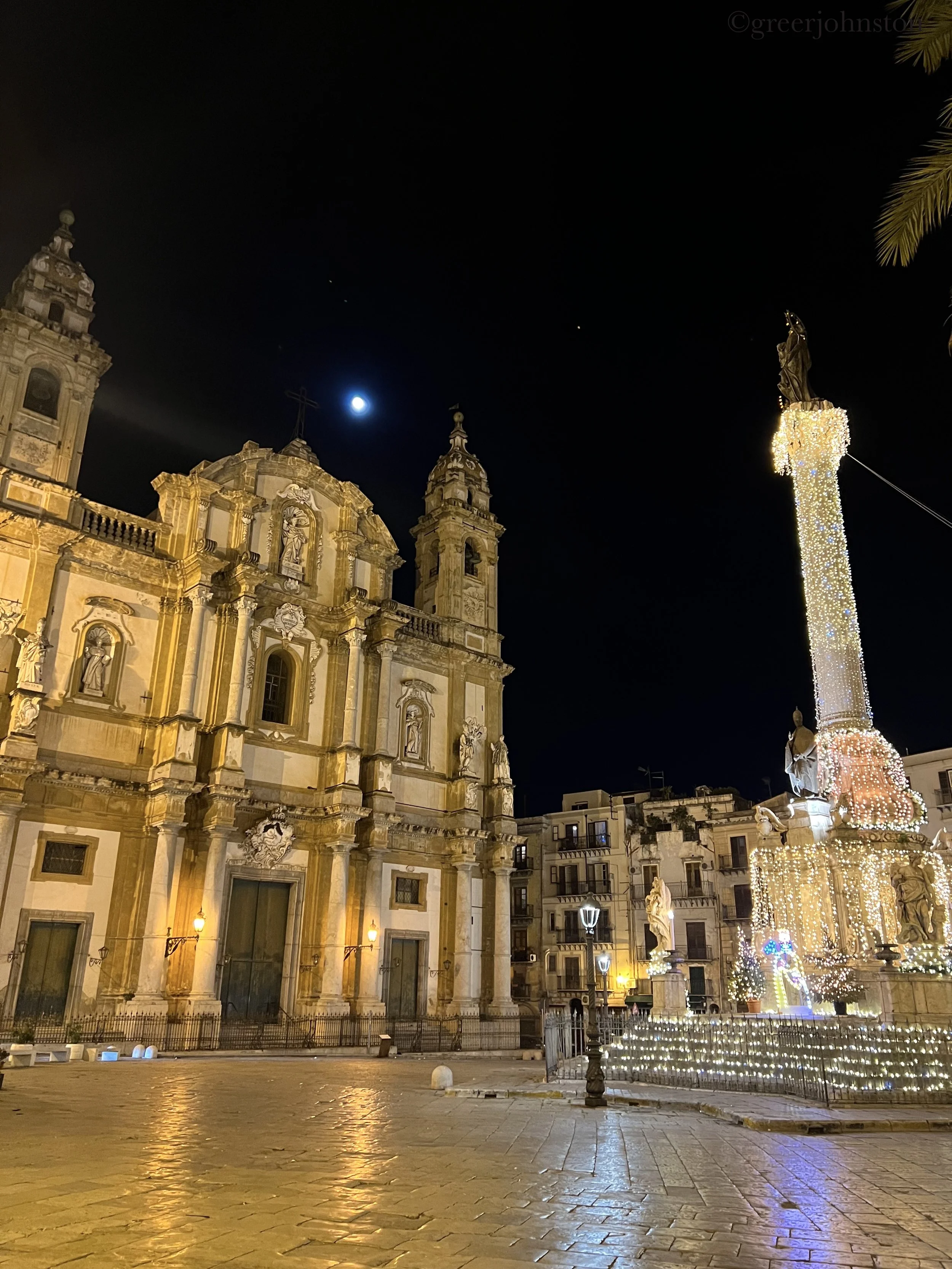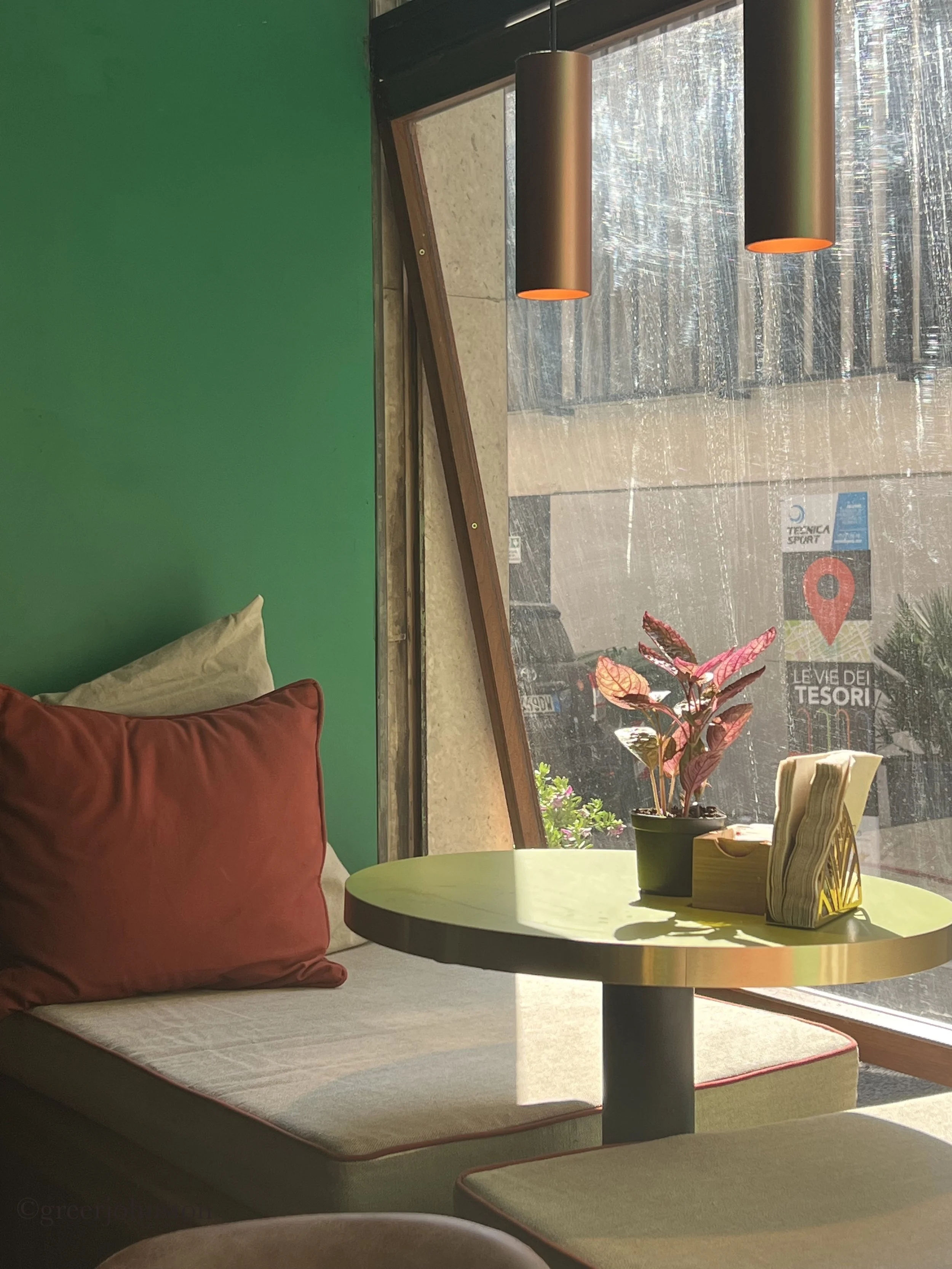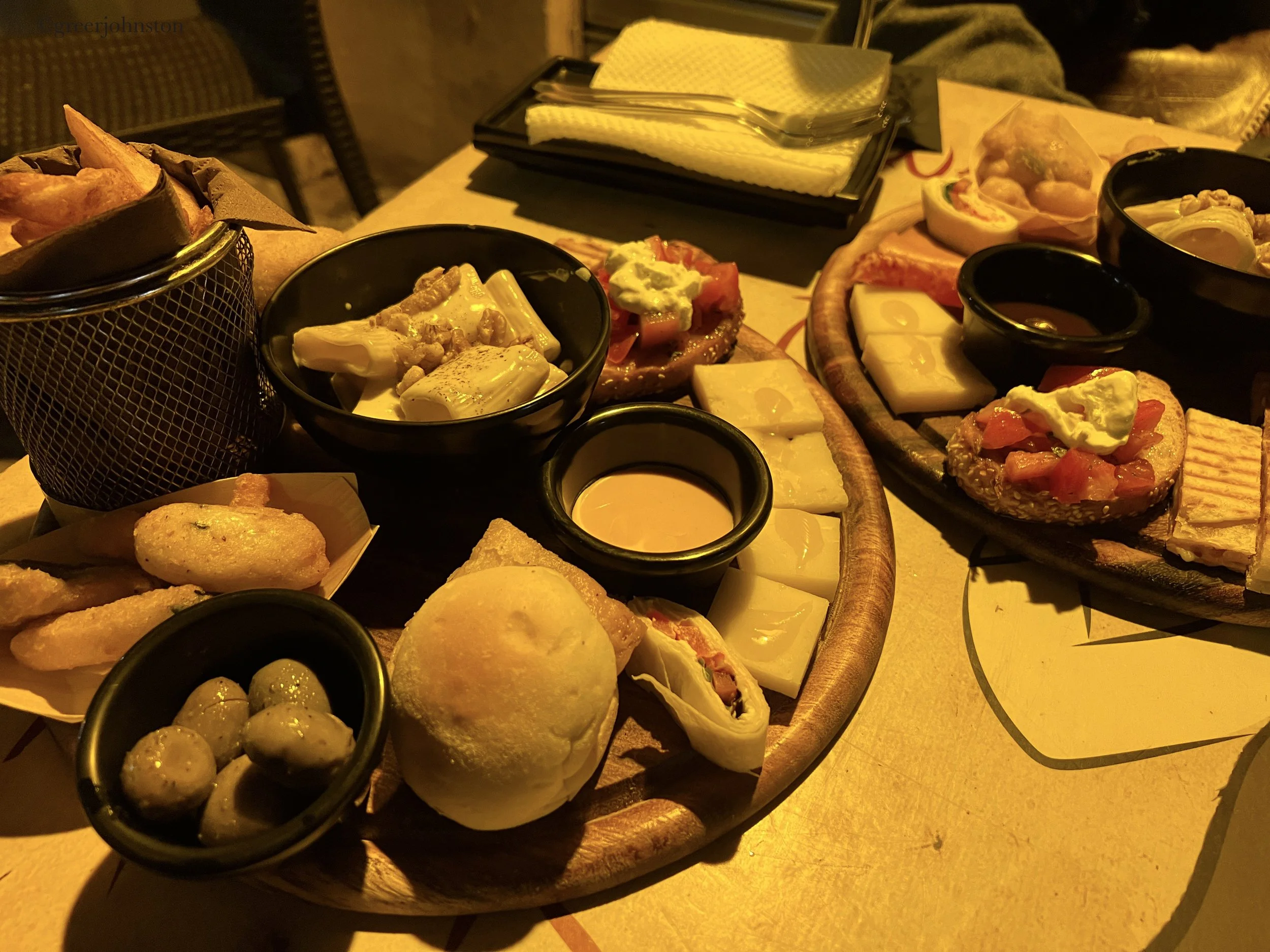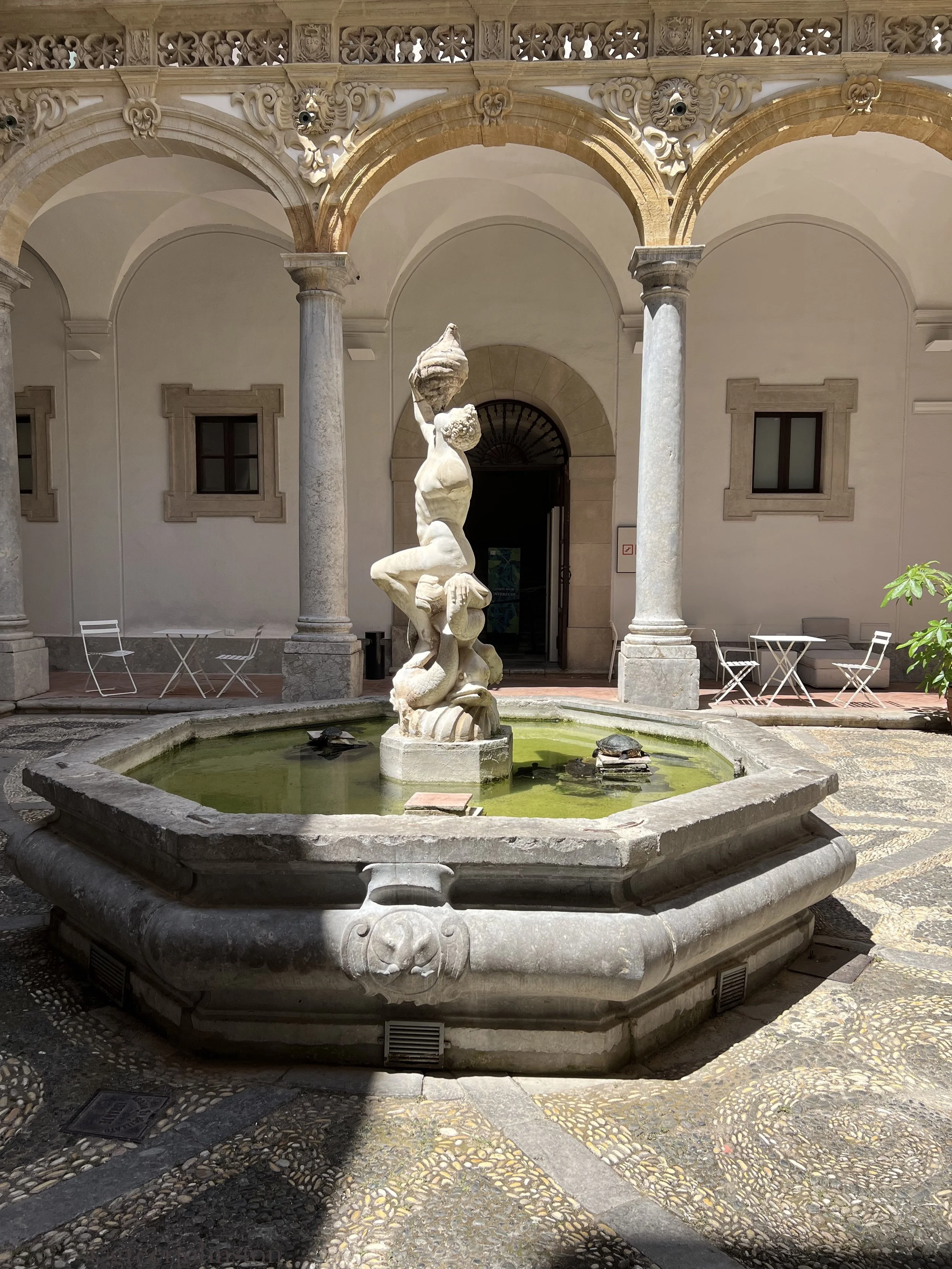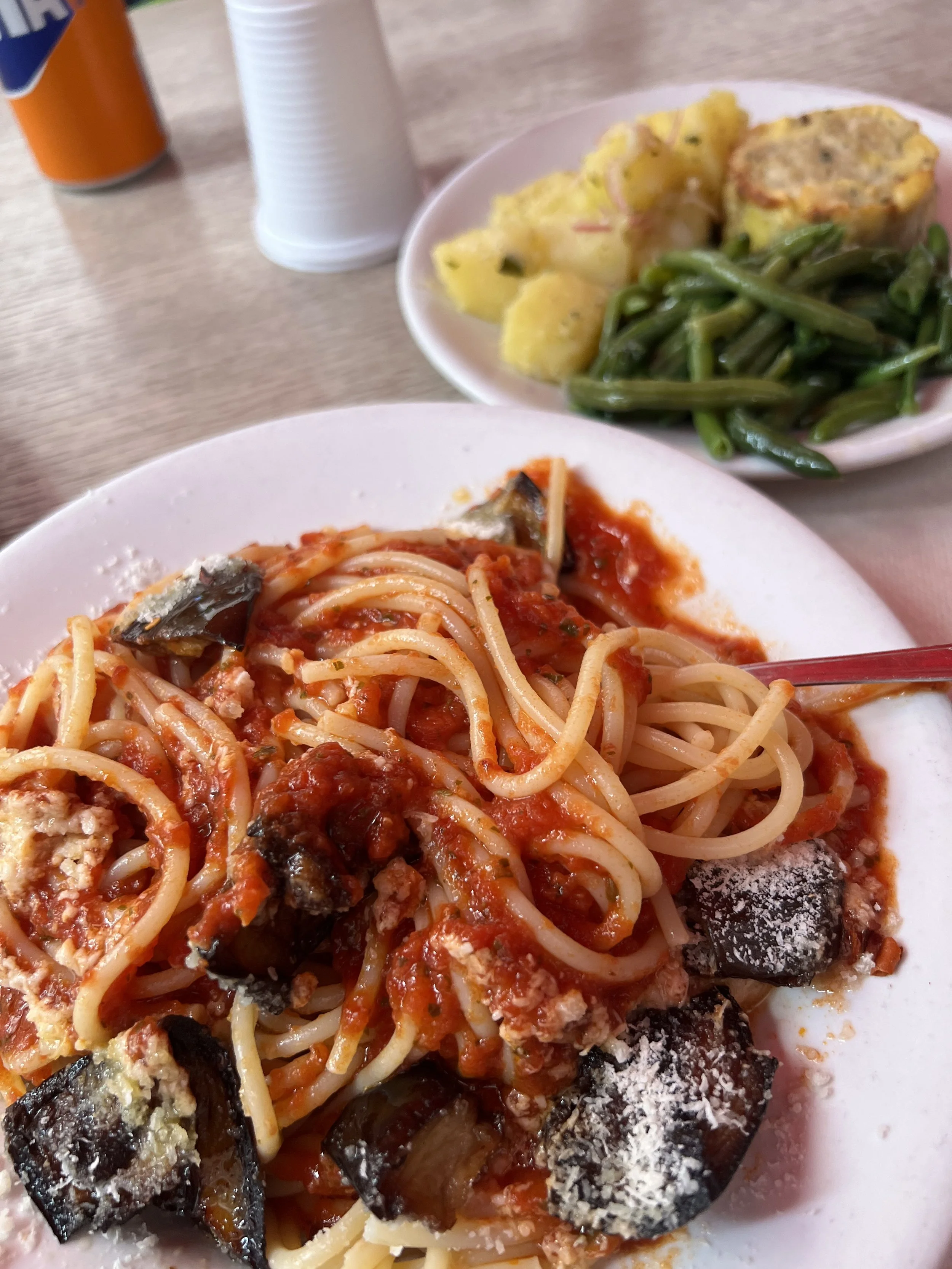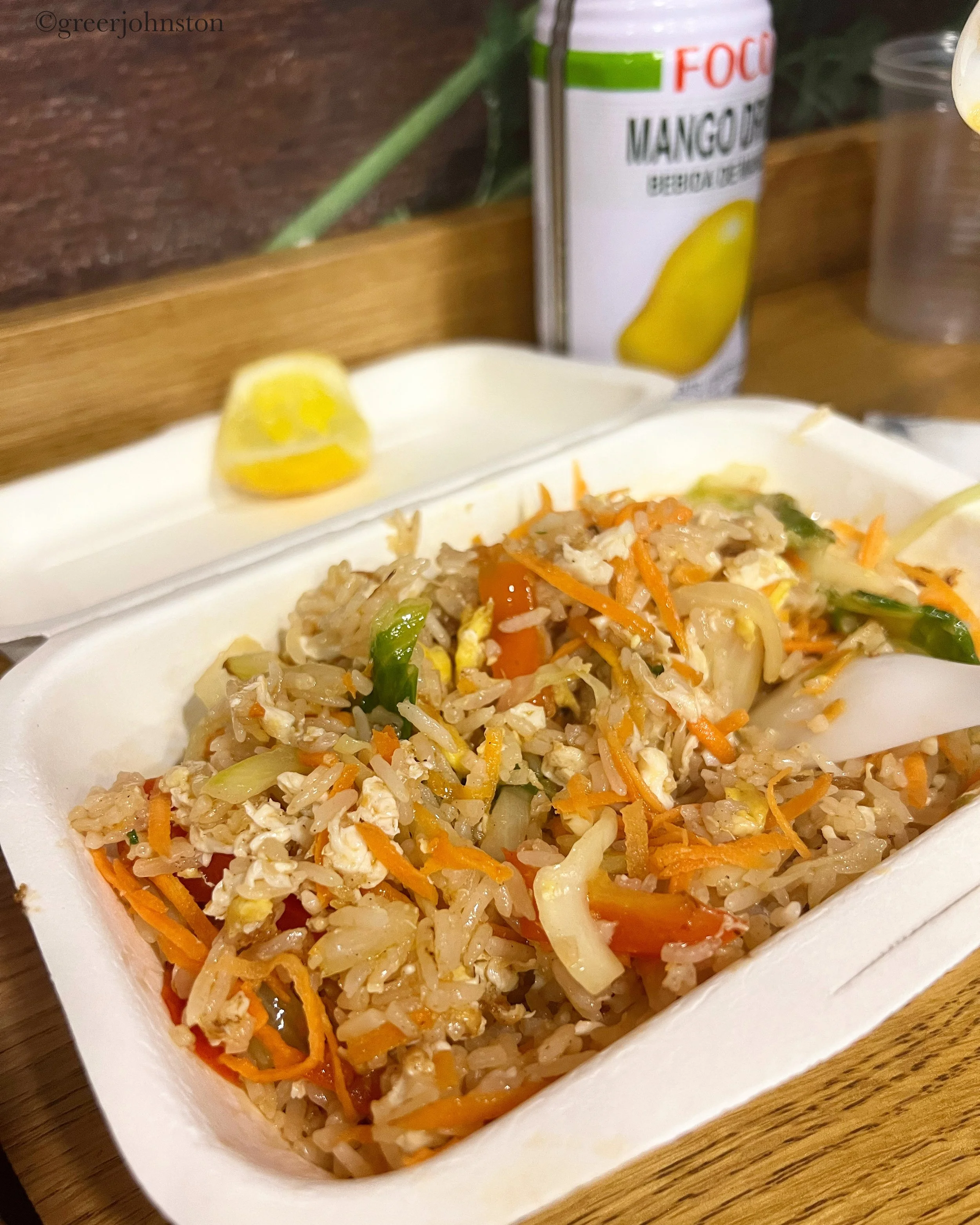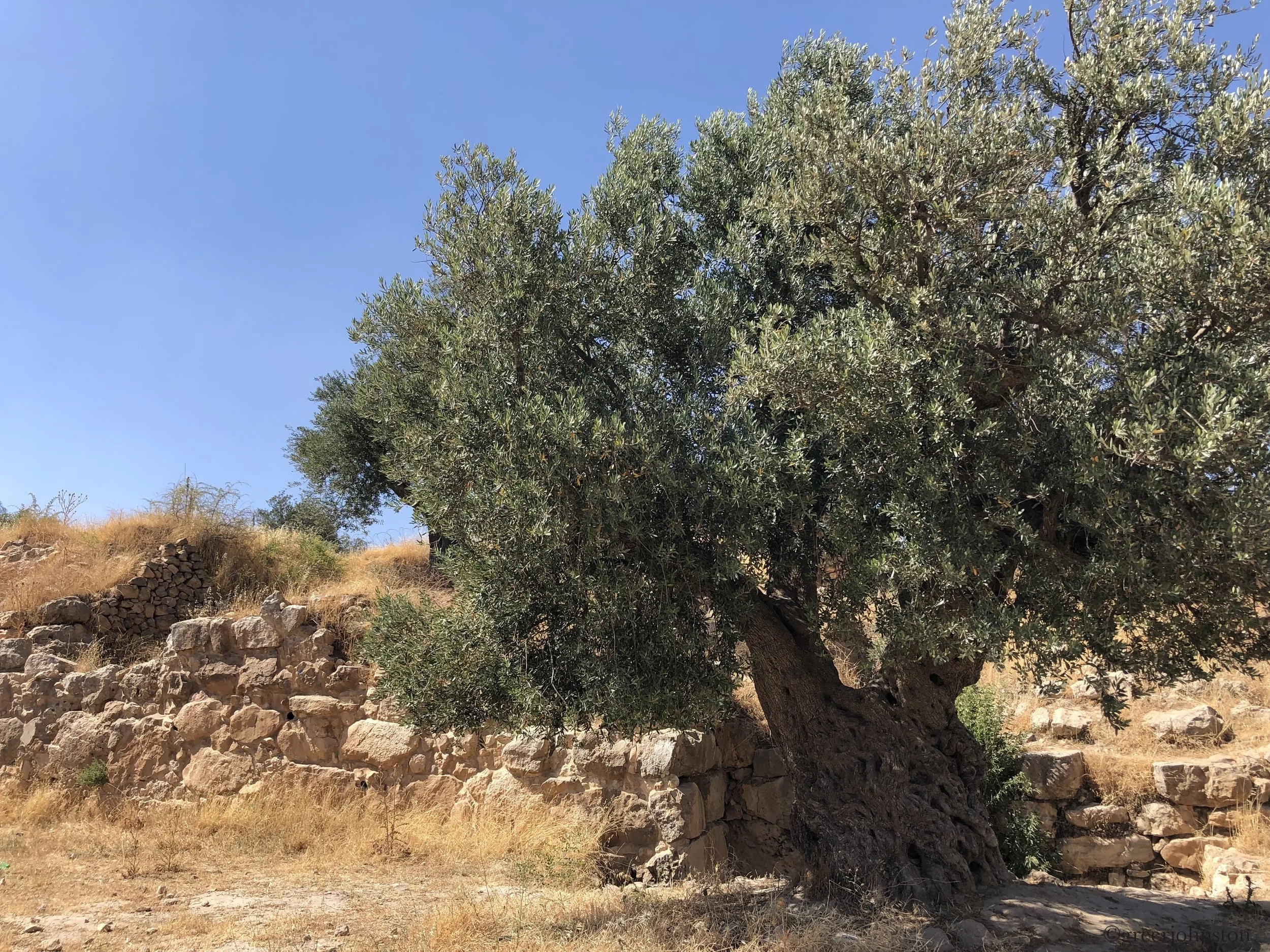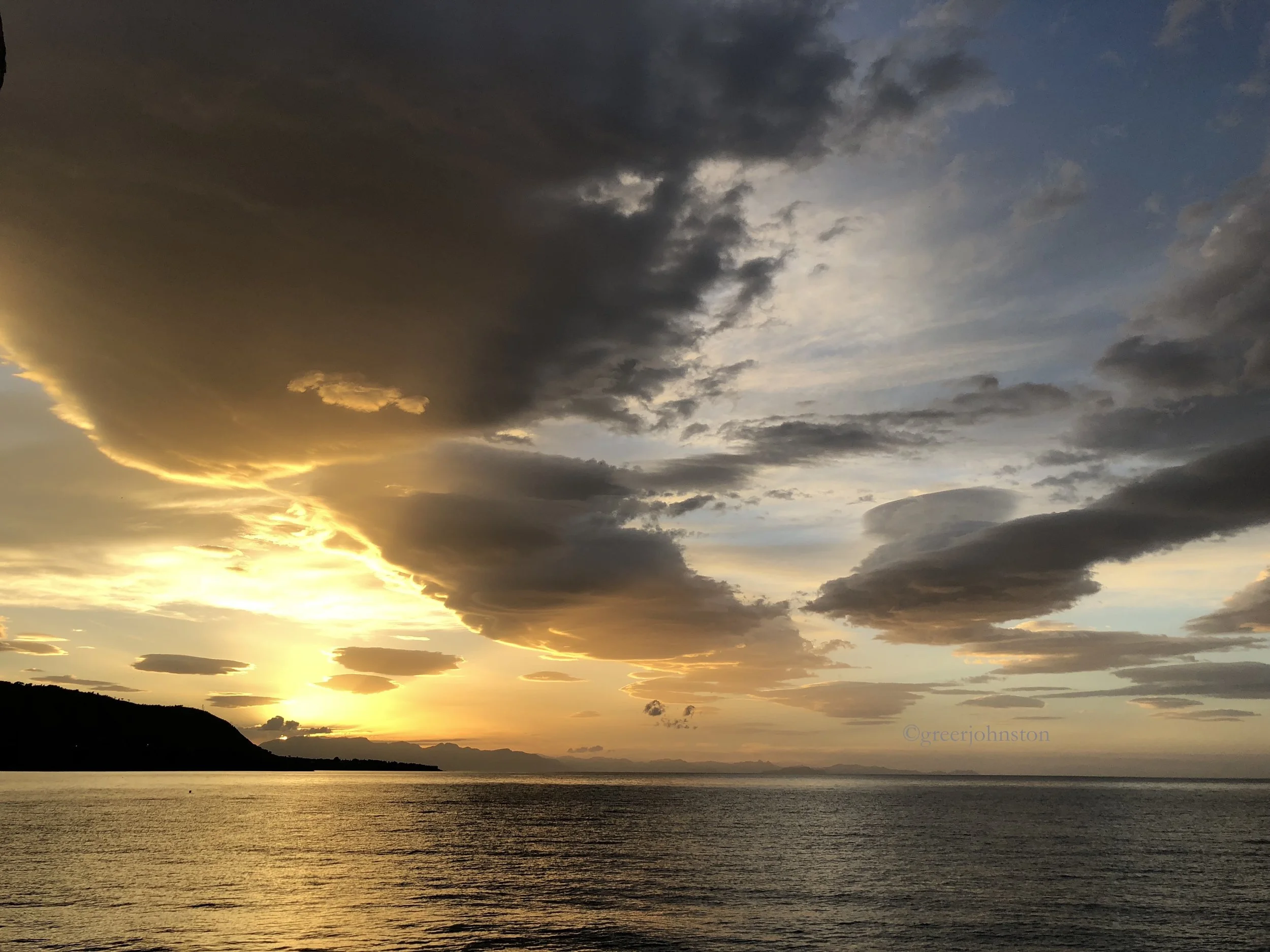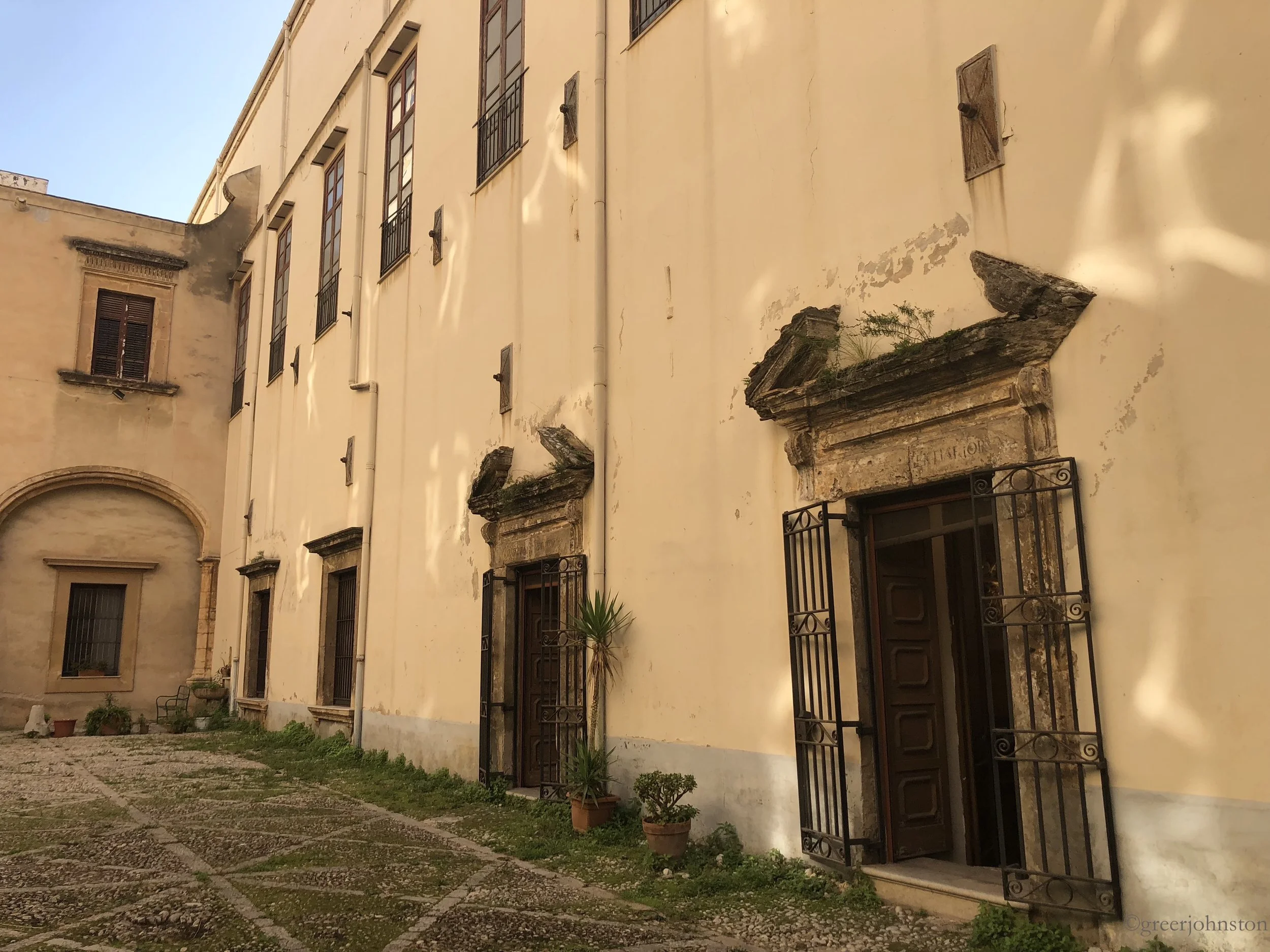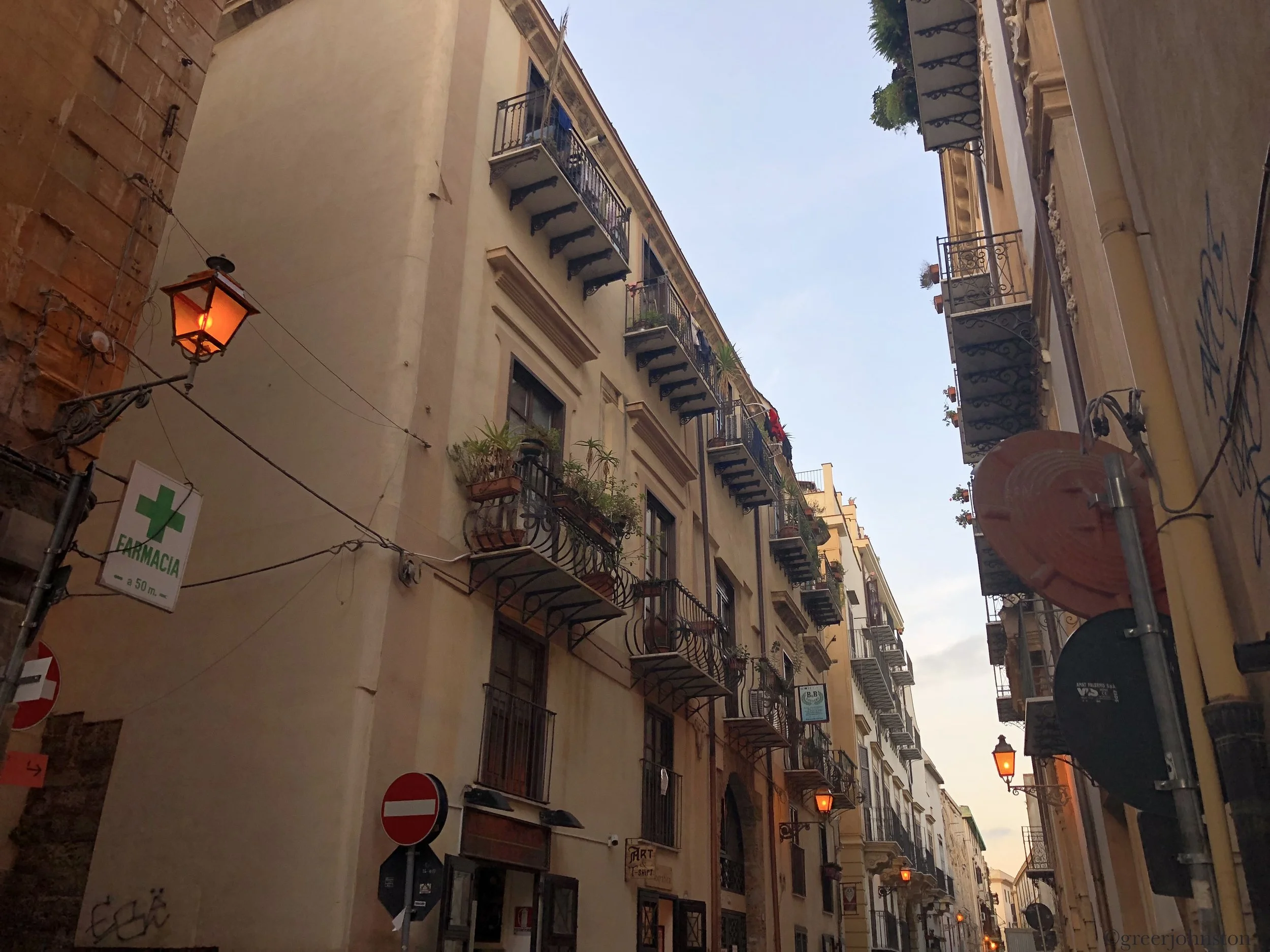Palermo - Vucciria and Castellammare - Loggia
The Chiesa di Santa Maria della Catena is one of the most striking façades in the neighborhood, with the sea just beyond
On our next stop of our tour of the neighborhoods of Palermo’s historic center, we have Castellammare - La Loggia, home to the famous Vucciria market. Extending northwestward from Via Vittorio Emanuele to Via Cavour, bordered by Via Maqueda and Via Crispi, essentially the area of La Cala, the u-shaped harbour for small fishing and recreation boats.
Castellammare, also known as La Loggia, is a densely-populated and diverse area, where street markets and elegant palazzi stand next to each other. I feel the best way to explore this complex area is to go on a little tour of the smaller neighborhoods that compose it. So we will begin at Quattro Canti, the intersection of the historical center, and head down Via Vittorio Emanuele to the sea.
Via Vittorio Emanuele
Making your way down Via Vittorio Emanuele, which is locally known as Il Cassaro, you will find Cafè Latino, a typical bar that is open from morning until evening, and in which you can stop by any time of day: breakfast, lunch, or apertivo, and even after dinner on weekends.
Crossing over Via Roma, just outside one of the entrances to the Vucciria on Via Vittorio Emanuele is my favorite no-name local late night stop for an arancina, or the traditional Sicilian fried rice ball. As a vegetarian, I usually take the one with spinach and mozzarella. Right next door is another ever-present food stand, this one serving a not-so-vegetarian friendly but extremely traditional palermitano meal: the pani câ meusa, which literally means “bread with spleen.” Not for the faint of heart, but tell someone in the know that you visited Palermo, and they will likely ask you if you tried it.
The streets just outside of Vucciria show how history is still part of the present today
Further down the street you will find Lattepa, another one of my go-to gelaterie.
Parmigiana pizza, my favorite in the summer
At this point, you can continue down Via Vittorio Emanuele towards the Porta Felice, one of the city gates and onwards towards the sea. Or, you can turn down Via Chiavettieri, a small charming street lined with cute cocktail bars, restaurants, and one of my favorite places to have a local pizza, Voglia di Pizza. Having a pizza here, sitting at a plastic table on the street on a hot summer evening is a one of my favorite summer experiences. As a treat I will get a parmigiana pizza, a Sicilian speciality with eggplant and Grano Padano cheese on top.
One last detour towards the sea could take you to La Cala, the horseshoe shaped harbour for small boats. If you come down early in the morning, you will see the fishermen coming in with their catch, even filleting small fish and selling them fresh in jars. It is a good place to go for a walk or a run, and lovely to walk during the day or in the evening to take in the sights.
A walk by the harbour at La Cala
La Vucciria
“Vucciria,” by Renato Guttuso
Coming back into the neighborhood, you could stop at Gelateria La Kala on your way to La Vucciria, one of the three historic markets of Palermo.
The three historic markets of Palermo become focal points of their surrounding neighborhoods. They are gathering places, of course where people go to do their local shopping, and a reference point for the communities. It is where you see familiar faces. Each market over the decades, the centuries, has developed its own unique character, and you can feel that distinctness between them.
The Vucciria was the subject of a famous painting by Renato Guttuso, which the artist donated to the University of Palermo, and now hangs in the Palazzo Steri. Painted in 1974, it could have been painted today, that is how timeless the Vucciria is.
The trademark phrase of Vucciria
In the early mornings, the central piazza, Piazza Caracciolo, is home to several fresh fish vendors. This explains why the floor of the market is always wet. It is has even given rise to a local saying, I balati ra Vucciria 'un s'asciucanu mai. It literally means that pavement of the Vucciria will never be dry. In another way you can you this phrase to respond to a question - Quannu i balati 'ra Vuccirìa s'asciucanu! That is to say - it’s never going to happen!
The little streets that lead off the main piazza have small shops, fruit and vegetable stands, known as fruittivendoli, as well as some restaurants. During the early mornings, and the winter, the market is calmer, and local life goes on as usual.
Looking down on Vucciria from Via Roma
Once summer comes, and the swarms of tourists along with it, the once empty piazza fills up with plastic tables and chairs and stands selling local street foods. You will hear the cooks screaming, “Caponataaaa!” referring to the traditional Sicilian eggplant side dish. If you are interested to try some traditional street food, you can pass by Angelo’s Da Jolly food stand and pick up a plate of stigghiola, or grilled intestines, the smoke of which gives passersby the impression that La Vucciria is on fire.
By night, the Vucciria turns into one of the main gathering points of the movida palermitana, the nightlife. The piazza and its alleyways will be packed with people of all ages out to enjoy the evening until the early hours of the morning. Loudspeakers from all corners blast music, competing with one another for sovereignty. There are dives up and down the tiny streets like La Taverna Azzurra, as well as makeshift stands, but eventually everyone just spills out in the piazza, dancing, chatting, and reuniting with old friends.
Vucciria on a summer night
I have found my own “third place” at Ciwara, a Senegalese restaurant just on the corner which has become a point of reference for many West African immigrants in the city. On Tuesday nights there is a jam session where anyone is welcome to play, and on Sunday nights there is a concert. In the summertime, passersby stop to watch as local dancers jump in to take their turns in front of the musicians. It’s a great place to sit and watch the Vucciria come to life. In case you can’t tell, I am a Vucciria girl through and through. Summer nights in the Vucciria are really an experience not to be missed. I don’t know of any other place like it in the world.
Piazza San Domenico
Piazza San Domenico at night
Making our way out the depths of the Vucciria inferno, rising up to the celestial we enter into Piazza San Domenico, home to one of the most photographed façades in the city. The Chiesa di San Domenico holds a great significance, being the final resting place of Giovanni Falcone, the anti-Mafia magistrate who was murdered in 1992. A mural of Giovanni Falcone and his colleague Paolo Borsellino, who was also killed by the Mafia just two months later, can be seen from La Cala.
If you would like to take in the view of the piazza from above, you can head into the Rinascente shopping mall and go to the very top floor where you will find Sicilò Food and View 360°. Visit in the late afternoon once the sun has begun to set for an apertivo overlooking the piazza below, with a suggestive view of the mountains beyond.
Comfy seating at Radici
If you prefer to stay closer to earth, just behind Rinascente is Radici, Piccola Museo della Natura. Opened in 2022, this small nature museum also features a bookshop and dining area that offers recipes based on Sicilian flavors and seasonal ingredients. Founded by four women, it has already made its name for itself as a local gathering spot. Perfect to meet with a friend or to get some work done on your laptop during the day, in the evenings there are concerts and handcrafted cocktails for aperitivo. Check their social media for their latest offerings.
There is another cute stretch of bars and restaurants around the corner from Piazza Giovanni Meli into Piazza San Giacomo La Marina, including Ferramenta, a lovely cocktail bar and restaurant with outdoor seating. There are a few more dining options down the street Largo del Cavalieri di Malta, or you can tuck into the hideaway at the end of the enchanting Via Pantelliera, Fúnnaco PizzaLab.
“Champagneria”
Making your way back towards Piazza San Domenico and then crossing over Via Roma, you will find yourself in the so-called “Champagneria” district, named for one of the bars there. This area surrounding the Piazza Olivella is the “go-to” place for a few specific things. If you are wanting to watch a football (soccer) match, this is the place to go. The restaurants lining this piazza and its side-streets will have their big screens up and their pizza ovens ready. If instead you are looking for a proper aperitivo, walk up the Via Orologio, where bars like Il Vespa and Il Siciliano can bring you a massive spread of various dishes along with your cocktail of choice. (Pro-tip: if you are vegetarian let them know when you order and they can prepare it without meat). And if you are just looking for a nice place to have a beer and sit outside, local gathering spots like Le Cupolette and the neighboring bars on Via Monteleone have you covered.
My vegetarian aperitivo at Il Siciliano
Inside the archeological museum, history lives with this statue now anchoring the turtle pond
If instead you are visiting during the day, you may want to check out the renowned archeological museum, the Museo Archeologico Regionale “Salinas.” The oldest museum in Sicily, this museum traces the incredible history of the island, displaying artifacts from its Greek and Roman eras of the past.
For lunch, you can head to Basile - Antica Focacceria del Massimo, everyday but Sunday. A local favorite, you may be a bit overwhelmed but you just have to learn the system. Take a look at the different sides, contorni, on offer in the displays, and head in a little ways towards the pasta window to see which dishes they are serving today. Here you can take your number for the pasta line. Head to the cassa, the cashier, and let them know what you are getting. You’ll most likely tell them how many pasta dishes, how many sides (they come in options of 3 or 5, for example), and how many drinks. The cashier will then give you tickets that you will respectively hand back to the pasta counter when it’s your turn to order, and the person who serves the side dishes and hands out drinks. I know it sounds a little confusing, and honestly it helps if you go with someone so you can work in teams: someone can find a table (it will be crowded) while the other person collects the food.
Our “pasta alla norma” at Basile
All of the dishes here are traditional Sicilian and Palermitan fare, all dishes you can find your neighbors serving for dinner. A very popular place among locals, you get a lot of food so I would order less first and then go back for more if you need. Between two people, we split one plate of pasta and three side dishes. Along with our two soft drinks it was under 10€ and we almost couldn’t finish everything!
Via Maqueda
From here the small side streets open up into Piazza Verdi with the impressive Teatro Massimo. You can either head towards the Teatro Politeama, walking down Via Ruggero Settimo and passing international commercial stores, or you can head back down Via Maqueda towards Quattro Canti. This part of Via Maqueda is always very busy. Many establishments have lined the pedestrian area with tables making it quite crowded with locals, tourists, bikes, and electric scooters. There are many new restaurants, gelaterie, and cafes popping up all the time. Some places I like to stop include the Terzo Cerchio for gelato and Naicha for a bubble tea. I also like to go to Sfrigola for an arancina, the traditional Sicilian rice ball, of which they have many classic and alternative varieties. Timila is a boutique pizzeria, and Ciurma is a fish restaurant, both of which are also locally well-loved.
Khao pad - fried rice - from Pad Thai Take-Away
I like to walk down to Via Napoli to find Pad Thai Take Away, in which every meal is made by Pantila, who warmly greets me everytime I see her. I love coming here, as it reminds me of the year I spent living in the Thai countryside, where most of the time I would eat at restaurants that were more like home kitchens. While it is technically “take-away,” there are picnic tables outside that you can “take-away” to.
This conglomeration of neighborhoods from centuries-old markets to intrepid new endeavours form the beating heart of the city. Here there is always action, always movement, always life. Sometimes that beating is the thousands of feet marching up and Via Maqueda, other times it is the swaying of the hips of people dancing the night away in Vucciria. And other times it is the soft cadence of voices below rising up to the rooftops. No matter where you go, you will feel a rhythm, and just by being here, you will be a part of it.
This is just a starting point to this neighborhood! As a perfectionist, it is difficult for me to publish this blog knowing it will always be incomplete, but that just means that there is more out there for us to discover! Any subsequent discoveries will be shared on my social media pages, so check there for updates!
Note: The header image is of Piazza San Domenico from the Sicilò Food and View 360° terrace.
For more neighborhoods in Palermo, please see my other guides here.
